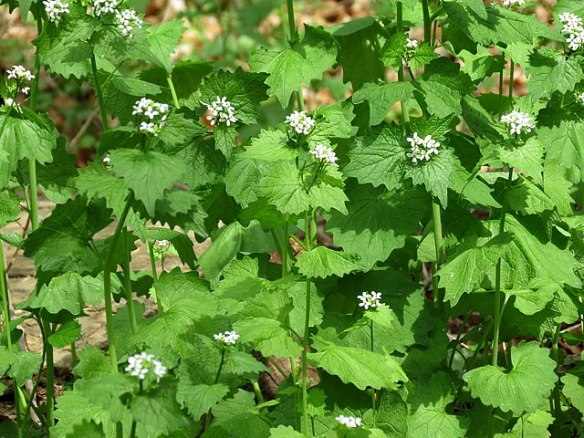(The below is a lecture delivered at the Uptown Rhythm Festival (https://uptownrhythmfestival.org/) on August 26, 2023. Thanks to Shiwali Varshney Tenner and the Illinois Center for Kathak (https://www.ickathak.org/) for the opportunity!)
Eating Sustainably on a Budget
First, a little bit about how I got here and why I’m talking about this:
Early in my life, I worked as a waitress, as a temp, and didn’t have a very big food budget. But early on, I realized that if I ate a diet of ramen noodles and Taco Bell, I was gonna get sick. So I started coming up with some really affordable ways to eat reasonably healthy food.
Then, decades later, I went back to school to study to be a dietitian. And I realized that a lot of the recommendations we make as healthcare professionals assume that you have time, money, and the ability to cook. Not everyone has these!
First: What does “Sustainable” mean?
- It can refer to farming practices that consider the long-term health of the land, water, and air
- It can refer to practices that build healthy local communities over the long term
- It can also refer to practices that sustain YOU: Ways of living that are good for the “long haul”, that nourish, protect, and energize you.
There’s a famous saying about hiring a contractor: “You can have fast, cheap, or good. Pick two.” So if you want it fast and cheap, it won’t be good. If you want it good and cheap, it won’t be fast. And, of course, if you want it fast and good, it’s really not going to be cheap.
Eating well is a bit like that: If you have plenty of money, you can hire someone to cook you organic meals. If you have plenty of time and knowledge, you can make absolutely everything from scratch. But if you lack time, money, or knowledge, it’s hard to do!
It’s important to recognize that you have to put you and your family FIRST. The choices you make have real impacts, but at the end of the day, if you and your family are going to bed with full bellies, that’s the most important thing. If this means that you bought something off the $2 menu at a fast food place, give yourself the gift of forgiveness.
One of the biggest disservices we do is to act as if our individual choices are the reason that we have unsustainable food systems. Asking people to have “Meatless Monday” is great, but until very recently, Illinois state law required that schools choose the lowest bidder for school lunch providers. So, while I am delighted to speak with you today about how you can CHEAPLY be more sustainable in your individual choices, it’s important to get involved and hold governments and corporations accountable for the waste and bad choices that they make.
So, with that said—let’s talk about eating sustainably on a budget.
The most sustainable, affordable thing you can do: AVOID FOOD WASTE!
Cooking and savvy eating takes PLANNING.
Plan your meals and your shopping.
Consider variety, nutrition, cooking implements needed, and storage space. Questions to ask yourself:
- Am I okay with eating the same breakfast or lunch?
- How many dinner entrees do I need this week?
- Are there days where you need something really quick?
- What do I already have at home?
Consider keeping an app on your phone that keeps track of what you have at home and allows you to build a grocery shopping list.
Buy smart:
- Compare prices. A bag of frozen spinach might be cheaper than a bunch of fresh spinach, and frozen spinach may be less wasteful because don’t have to worry about it going bad as quickly.
- Know what you’re willing to do. If you want to learn to bake bread, that’s great! But if you know you won’t do that, don’t buy a 5 lb bag of flour that will go rancid in a cupboard. If you are learning new cooking techniques, start modestly and build your skillset.
- Always have a few pantry items for busy days or unplanned emergencies. I keep cans of refried beans, because a bowl of canned refried beans topped with a little cheese and hot sauce for dinner is quick, cheap, filling, and reasonably nutritious. Another option is low sodium tomato soup, as you can “dress it up” with canned beans, vegetables, or noodles for a quick and delicious meal that is about as fast as ramen but far more nutritious.
- Look at where it’s grown: Consider local companies and farms where possible. It’s not always possible or affordable to buy local, but whenever you can, you should.
Save food scraps!
-
-
- Broth/soup stock: Have 2 bags in freezer, one for meat, one for vegetables
- All veggie and herb scraps, even peelings, an be used
- Meat scraps and bones make great stock/broth.
- Parmesan cheese rinds can also be a flavorful addition to broths
- If buying in bulk, make sure you have a plan + storage space
- Freeze small amounts of food in ice cube trays
- Summer herbs can be blended in a small amount of water and frozen
- Broth can be frozen in ice cube trays if you want to have more adjustable serving sizes
- DIY chili pastes, etc can be frozen in ice cube trays
- If it absolutely needs to be thrown away, consider composting (elevated barrels to avoid rodent infestation)
- Broth/soup stock: Have 2 bags in freezer, one for meat, one for vegetables
-
Consider Fermentation:
- Sauerkraut, kimchee, etc. can be made with cheaply available summer vegetables–cabbage is cheap and plentiful.
- Safe fermentation is easy, but some guidelines do need to be followed. Use the USDA guide to make sure that you are safe: National Center for Home Food Preservation
Consider The Ancestors:
- What foods did your ancestors eat? How did they preserve it? How did they grow it? Be curious about how food was grown, prepared, and stored where you live and where you came from. If you have elders in your life, ask them questions! (I learned to can vegetables and freeze sweet corn from my grandmother.)
- Consider organizations like Oldways
Other ideas:
- BAKER, BAKER: There is a reason that sourdough got popular over the pandemic! Consider no-knead bread recipes if you have the time.
- BEAUTIFUL BEANS: The versatility and nutrition of beans, lentils, cowpeas and other legumes cannot be overstated! Find a way to enjoy beans.
- SPROUTING SEEDS: Sprouting is an easy, nutritious, and extremely sustainable way to bring fresh vegetables into your diet. You can order sprouting seeds from a company based in Illinois at https://www.easypeasyplants.com/
- EAT THE WEEDS: Dandelion, garlic mustard, and lambsquarters are easy to identify, delicious, and highly nutritious. (In urban settings, please recognize that not all areas are safe to harvest from, due to runoff from roads, pollution, or soil issues, such as high lead content.)
-
Lambsquarters are related to quinoa, and are delicious, especially when harvested before flowering: https://en.wikipedia.org/wiki/Chenopodium_album
 Image courtesy Cornell University, https://commons.wikimedia.org/wiki/File:Chenopodium_album_-_seedling_(18216589254).jpg
Image courtesy Cornell University, https://commons.wikimedia.org/wiki/File:Chenopodium_album_-_seedling_(18216589254).jpg - Dandelions are unmistakable, and all parts of the plant (flower, leaf, and root) can be eaten. The early spring blossoms are absolutely delicious when fried in batter as a fritter!
- Garlic mustard is a terribly invasive plant that is not native to Illinois has taken over many forest preserves. Fortunately, it’s quite tasty! Here is an excellent writeup on how to identify it: https://www.nature.org/en-us/about-us/where-we-work/united-states/indiana/stories-in-indiana/garlic-mustard/

Image courtesy Katja Schultz, https://commons.wikimedia.org/wiki/File:Garlic_Mustard_(34130349315).jpg
-
